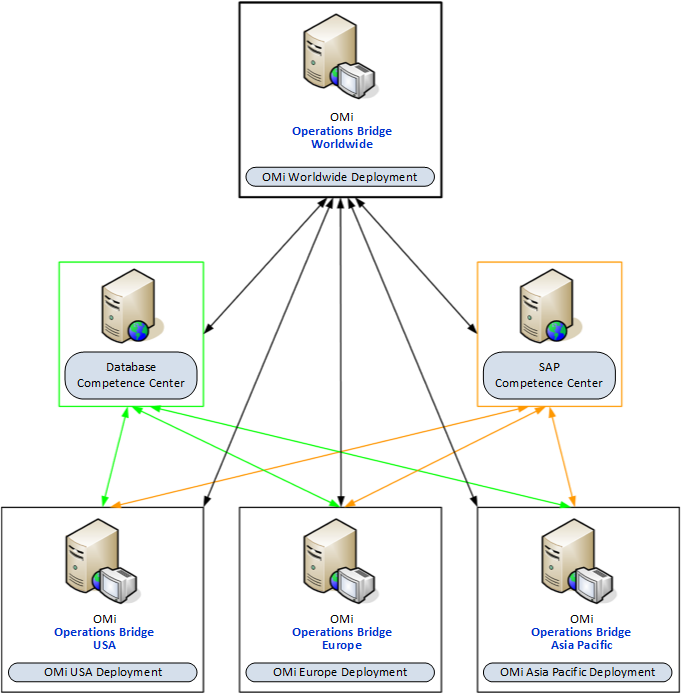Searching the Help
To search for information in the Help, type a word or phrase in the Search box. When you enter a group of words, OR is inferred. You can use Boolean operators to refine your search.
Results returned are case insensitive. However, results ranking takes case into account and assigns higher scores to case matches. Therefore, a search for "cats" followed by a search for "Cats" would return the same number of Help topics, but the order in which the topics are listed would be different.
| Search for | Example | Results |
|---|---|---|
| A single word | cat
|
Topics that contain the word "cat". You will also find its grammatical variations, such as "cats". |
|
A phrase. You can specify that the search results contain a specific phrase. |
"cat food" (quotation marks) |
Topics that contain the literal phrase "cat food" and all its grammatical variations. Without the quotation marks, the query is equivalent to specifying an OR operator, which finds topics with one of the individual words instead of the phrase. |
| Search for | Operator | Example |
|---|---|---|
|
Two or more words in the same topic |
|
|
| Either word in a topic |
|
|
| Topics that do not contain a specific word or phrase |
|
|
| Topics that contain one string and do not contain another | ^ (caret) |
cat ^ mouse
|
| A combination of search types | ( ) parentheses |
|
OMi enables you to manage widely distributed systems from a central location. In a distributed deployment, you can configure your environment hierarchically. You can then spread management responsibility across multiple management levels, according to criteria such as operator expertise, geographical location, and the time of day. This flexible management enables operators to focus on their specialized tasks, with the benefit of round-the-clock technical support available automatically and on demand.
The scalable architecture enables one or more OMi instances to be combined into a single, powerful management solution arranged to meet the requirements of your organizational structure. So you can configure servers to forward events to other servers in your environment.
In a distributed environment, servers hosting OMi can be configured to work not only with other like servers, but also with multiple OM for Windows and OM for UNIX management servers, other OMi servers, and third-party domain managers.
In such an hierarchical, distributed environment, you can configure OMi to:
-
Be the central event consolidator, or a manager-of-managers (MoM), for the whole environment at the top of the hierarchy.
-
Work with other HPE products, such as NNMi and SiteScope.
-
Work with third-party domain managers, such as Microsoft Systems Center Operations Manager.
You can configure servers hosting OMi to:
-
Forward events to other servers hosting OMi and keep those events synchronized among the servers.
-
Receive messages forwarded from multiple OM for Windows and OM for UNIX management servers and keep those messages synchronized between servers hosting OMi and OM management servers.
-
Receive events forwarded from a BSM 9.x server receiving alerts from APM applications, such as HPE Business Process Monitor (BPM).
Manager-of-Managers
The following figure shows an example of an hierarchical, distributed environment, with a central server hosting OMi managing other regional servers hosting OMi:

In this example, OMi Europe, OMi USA, and OMi Asia Pacific regional server deployments are managing different geographies. OMi hosted on the OMi Worldwide server deployment is at the top of the hierarchy, and is managing regional servers. It is acting as the central event consolidator, or MoM, for the complete environment. It is a worldwide operations bridge. Regional servers can also act as managers in their own geographies for subordinate systems to create a regionally monitored environment. It is possible to cascade the management of monitored environments in a hierarchical design.
If you operate in a large enterprise with multiple management servers distributed over a wide area, specialist knowledge relating to a specific subject is not always available locally. For example, your organization might have a competence center responsible for SAP. In addition, another center of expertise may be responsible for databases.
A competence center hierarchy distributes responsibility for configuration items in the monitored environment. Regional servers are not solely responsible for configuration items.
Instead, events about specific subjects go to a competence center server, where expertise exists to solve problems for similar types of configuration items in the monitored environment.
In a distributed environment, the system administrator can configure regional servers to forward certain messages to other servers in the network. The same administrator can configure regional servers to forward events to any server anywhere in the network, based on event attributes.
In the example scenario, all regional servers (OMi Europe, OMi USA, and OMi Asia Pacific) forward all database-related events to the database competence center server, and all SAP-related events to the SAP competence center server.
In this type of scenario, the operations bridge synchronizes event actions (for example resolve, assign, severity change) among the regional servers and the competence centers. This ensures the event states are always synchronized across the enterprise environment.
We welcome your comments!
To open the configured email client on this computer, open an email window.
Otherwise, copy the information below to a web mail client, and send this email to ovdoc-asm@hpe.com.
Help Topic ID:
Product:
Topic Title:
Feedback:





